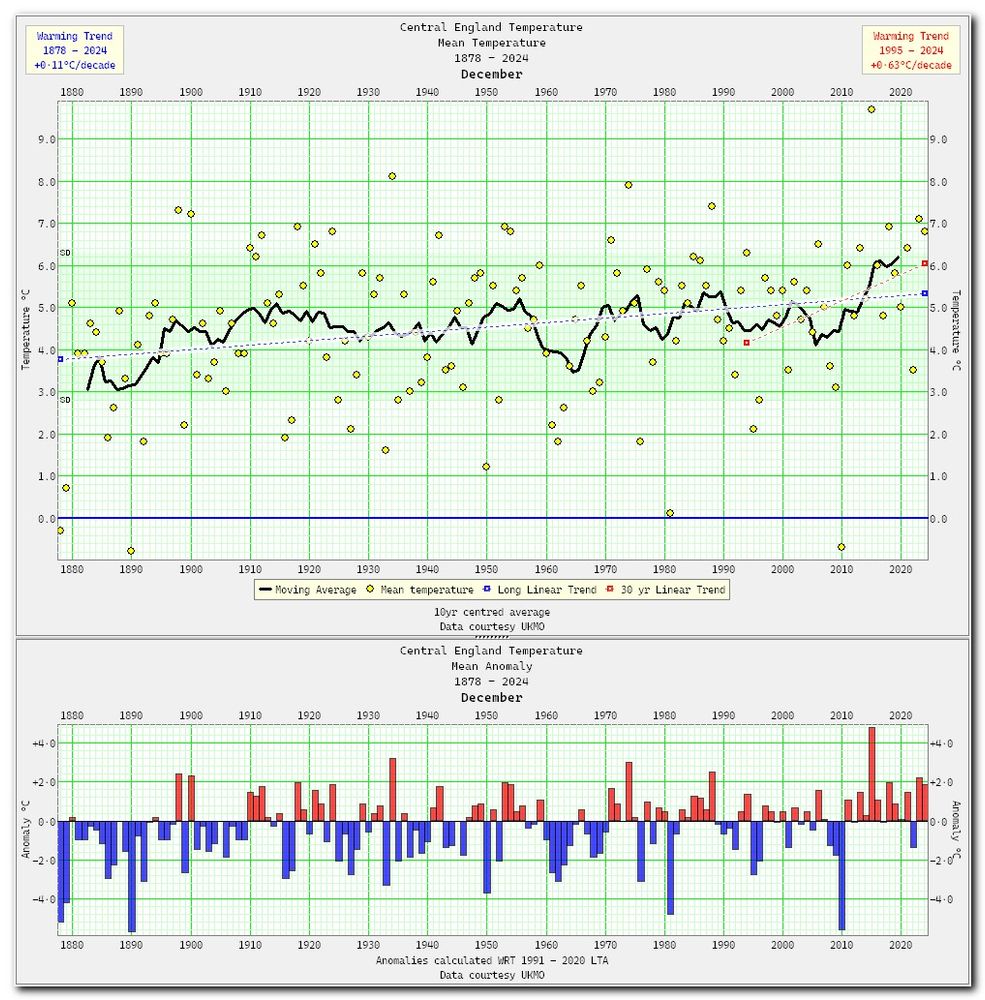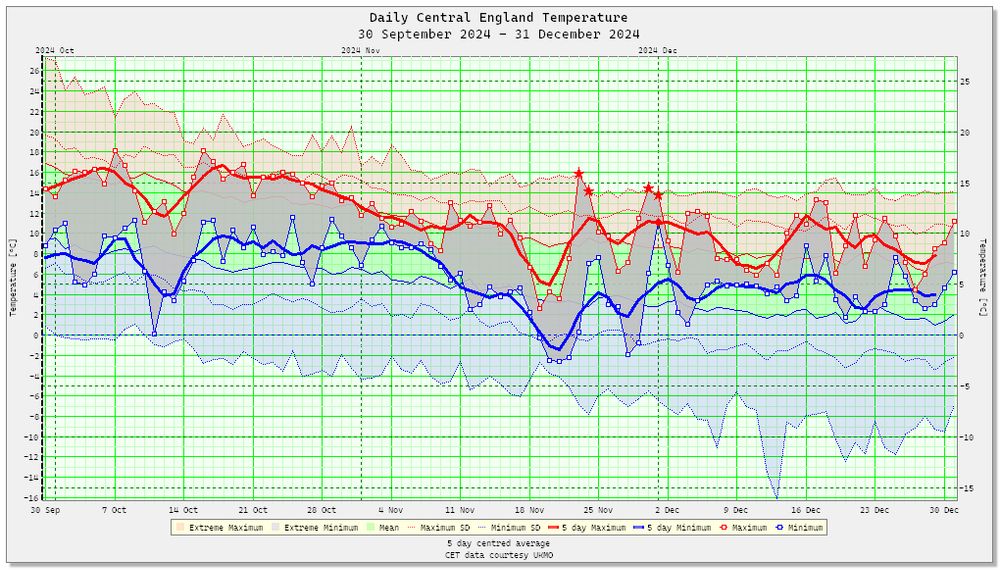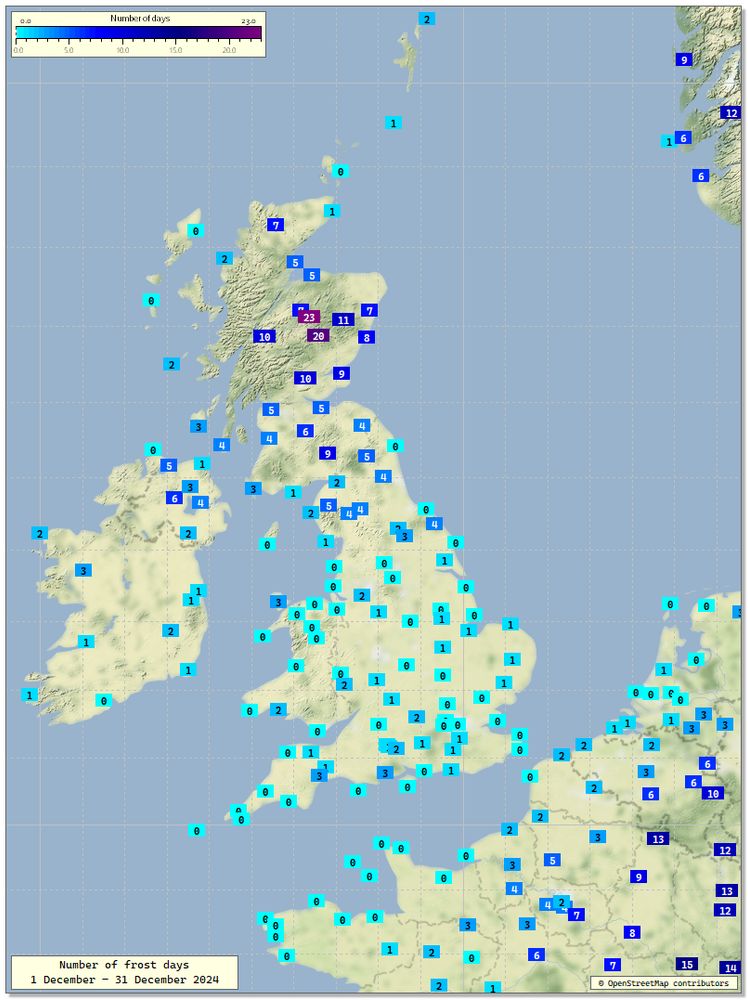Buchan Spells

1829-1907
Buchan spells are either cold or warm spells that the 19th century Scottish meteorologist Alexander Buchan claimed happened at roughly the same times each year. Through statistical analysis, Buchan claimed to have discerned patterns in the Scottish weather that repeated about the same time of the year. He theorized that these were predictable interruptions (either warmer or colder) in the smooth annual transition of temperatures between the seasons. They are now believed by meteorologists to be random events.
Buchan cold spells:
- 7-14 February
- 11-14 April
- 9-14 May
- 29 June – 4 July
- 6-11 August
- 6-13 November
Buchan warm spells:
- 12-15 July
- 12-15 August
- 3-14 December
Courtesy of Wikipedia

Although the CETCET Central England Temperature series is for temperatures in central England and not Scotland, it’s the only daily temperature series that’s available back beyond the 19th century with which I could verify the accuracy of Buchans nine cold and warm spells, so it will have to do! As you can see from the results in the bar chart above of correct results from 1772, and if I’ve done my programming correctly, they show that meteorologists are correct in believing the cold spells are not true singularities, but rather the result of random events. Despite knowing this for many years, I still can’t resist seeing if a cold or warm spell is correct, certainly the 7th to 14th February 2025 look likely to be correct.























































